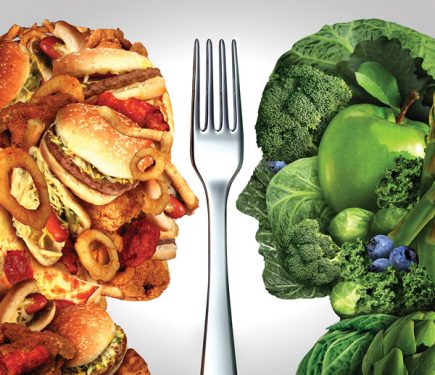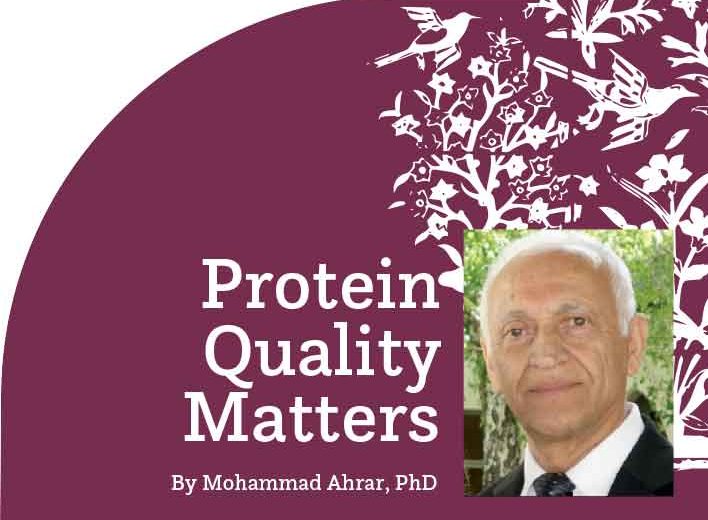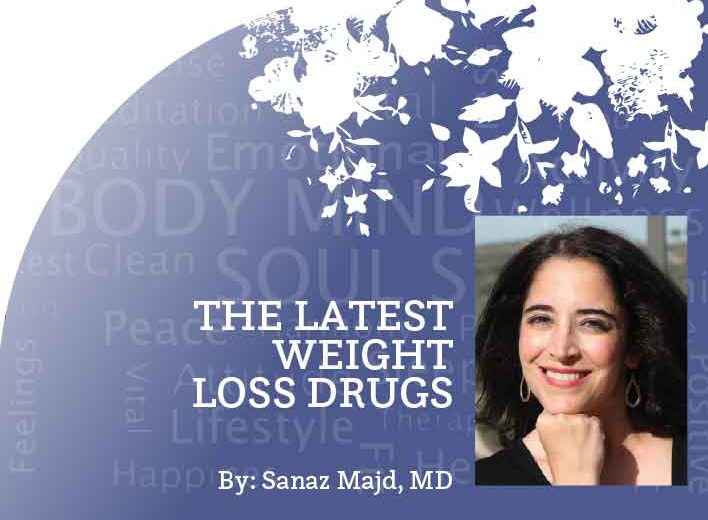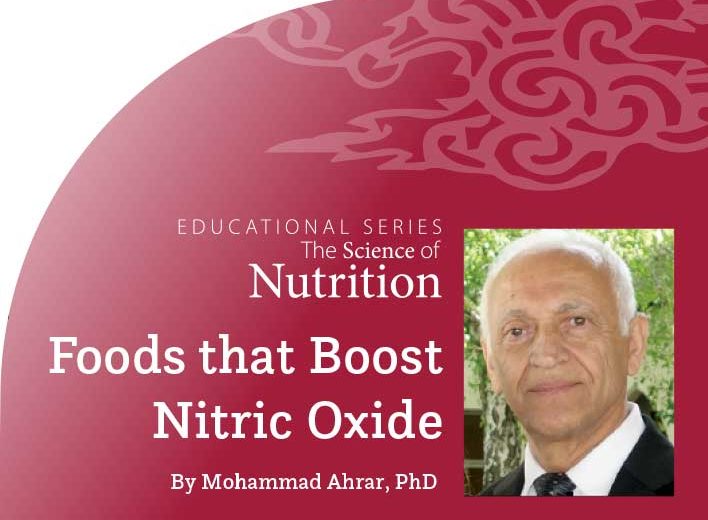Educational Series
The Science of Nutrition
Are Fats Bad for You?
By Mohammad Ahrar, PhD
Introduction
The food that we normally eat consists of a variety of nutrients that the body needs for normal growth, production of energy, tissue repair, and maintaining health. Major nutrients include lipids, carbohydrates, proteins, vitamins, minerals, and water. In this issue of Peyk, we will discuss basic scientific information about lipids and what role they play in your health.

Are Lipids And Fats The Same?
Lipid is a general term that includes fats, oils, phospholipids, triglycerides, cholesterol, sterols, and waxes. All forms of lipids contain carbon, hydrogen, and oxygen. Fats are usually of animal origin, usually solid at room temperature, and contain mostly saturated fatty acids. Oils are usually of plant origin, mostly liquid, and contain unsaturated fatty acids. Because the term fat is more commonly used than lipid, we may use the terms interchangeably in this article.
Do You Need Fat In Your Diet?
The use of fats and lipids in the human diet is summarized below:
Fats are a concentrated source of energy and provide twice as much energy as proteins and carbohydrates.
The membranes of all cells in your body consist mainly of lipids—75% phospholipid and 20% cholesterol. Without these molecules, cells cannot function and organisms cannot survive.
Fats are an integral part of brain tissue. The myelin sheath covering the axon of most nerve cells is made of lipids. Degeneration of the myelin sheath causes multiple sclerosis (MS).
Fats are necessary for the absorption of fat-soluble vitamins, such as vitamins A, D, E, and K. Without fat in the diet, the absorption of these vitamins would be in jeopardy.
Fats insulate the body and support and cushion all organs of the body.
Cholesterol and essential fatty acids are necessary for the health of a growing fetus and the health of the body in general.
Elimination of fat from the diet can reduce female fertility and may increase skin problems, mental problems, and even the incidence of stroke.
What Are Lipids Made Of?
The basic structure of different types of lipids is fatty acids (FA), which are themselves made up of chains of carbon atoms attached to hydrogen atoms. The carbon chains in normal fatty acids can range from 4 carbons to 22 carbons. For example, most fatty acids in butter contain short-chain fatty acids (mostly of 4 carbon chains). Fatty acids in olive oil have 18 carbons. More information about fats is discussed in Peyk #159 (Sep/Oct 2015).
Types of Fatty Acids
Saturated fatty acids (SFA) have all carbons in the chain bonded with hydrogen ions (saturated with hydrogen). Unsaturated fatty acids (USFA) have chains in which some carbons are not fully bound with hydrogen atoms. Therefore, unsaturated fatty acids have a double bond (C=C) between some carbons. Unsaturated fatty acids are usually liquid at room temperature.
If fatty acids have only one double bond in the chain, they are referred to as monosaturated fatty acids (MSFA). For example, oleic acid, which is found in olive oil, has one double bond. Polyunsaturated fatty acids (PUFA) have more than one double bond among the carbons in the fatty acid chain. For example, linoleic acid (found in some plant oils) has 18 carbons and contains three double bonds. Most fats and oils contain both saturated as well as unsaturated fatty acids, but the proportion of the fatty acids in the fat varies.
What Are “Good” Fats And “Bad” Fats?
Studies show that highly saturated fats, such as animal fat, in the daily diet is a risk factor for cardiovascular disease. So, these fats may be considered “bad” fats. Other studies revealed no link between saturated fat and heart disease, while yet others have found beneficial effects of saturated fats on the cardiovascular system, bone strength, healthy lungs, brain, and immune system.
The basis for these conflicting results can be attributed to the amount and type of fat consumed. Reports from Mayo Clinic have shown that moderate consumption of saturated fats that contain short-chain and medium-chain fatty acids, such as butter and coconut oil, produce energy in the body rather than being accumulated as fat. Based on the scientific data, saturated fats found in milk and some other animal products may not be considered bad fats.
Do saturated fats have any benefit?
Saturated fats are more resistant to heat and are thus more tolerant to oxidation during boiling and frying, whereas unsaturated fats and oils can be oxidized and damaged quickly when exposed to air and sunshine. Food products that contain saturated fats also have a longer shelf life. For this reason, most food items such as cookies, crackers, chips, and other foods on store shelves that do not refrigeration contain saturated fats..
Downfall of unsaturatted fatty acids.
Although unsaturated fats in the diet are considered healthy, oils that contain a large percentage of unsaturated or polyunsaturated fatty acids—such as olive oil, corn oil, and canola oil—are more vulnerable to oxidation and rancidity. Direct light, trace minerals such as copper (Cu) and iron (Fe), and high temperatures cause oxidation of unsaturated fatty acids more than saturated fatty acids. Polyunsaturated fatty acids can be oxidized faster during frying at high temperatures and produce toxic smoke that may contain acrolein which is mutagenic (causing genetic mutation) and can cause cancer.
Studies have also shown that oxidation of unsaturated fatty acids leads to the formation of free radicals or lipid peroxides, which are health hazards and risk factors for the development of atherosclerosis (plaque buildup in arteries) and cancer. For these reasons, oils are not recommended for frying at very high temperatures.
What Are The Essential Fatty Acids?
Essential fatty acids are fatty acids that are necessary for the human body, but humans do not have necessary enzymes to produce them from other sources; therefore, essential fatty acids must be included in the diet. There are two major essential fatty acids that humans need—linoleic acids and linolenic acids. These two fatty acids are polyunsaturated and are known as Omega 6 and Omega 3 fatty acids, respectively. Nonessential fatty acids are also needed by the human body, but they can be synthesized from carbohydrates and other nutrients.
Research from the University of Maryland, Mayo Clinic, and other research institutes shows that unsaturated fats have health benefits. For example, unsaturated fats in the diet increase High-Density Lipoproteins (HDL) or so-called good cholesterol. Research also indicates that some polyunsaturated fatty acids, including Omega 6 and Omega 3 fatty acids, are very important to healthy brain function and the formation of nerve cells in growing embryos. Polyunsaturated fats are also related to mental health, reducing the risk of dementia in older people, and even have beneficial effects on diseases such as hypertension, arthritis, atherosclerosis, depression, adult-onset diabetes mellitus, myocardial infarction, thrombosis, and even some cancers.
Fats that contain unsaturated and polyunsaturated fatty acids are considered good fats. Major sources of good fats include wild-caught seafood (which has lower amounts of mercury than farm-raised); eggs from pasture-fed chickens; and meat and dairy products from grass-fed animals. Plant foods and vegetables contain good fat. Other good sources include salmon, tuna, trout, mackerel and herring which are high in these fats. Soy-based foods, walnuts, pecans, canola oil, and ground flaxseed are also good sources of fats which are also good sources of Omega 3 fatty acids.
Trans Fats
Trans fats are considered bad fats which are not essential for the body and provide no known benefit to human health. They are produced artificially by injection of hydrogen into vegetable oils under pressure and heat to hydrogenate the carbons. Margarine, shortening, fried foods, and most processed foods contain trans fats.
It has been shown that regular use of trans fats and partially hydrogenated fats in the diet can promote systemic inflammation in the body and increase the level of triglycerides in the blood. Trans fats increase the blood levels of LDL (known as bad cholesterol) and, worse, they lower the levels of HDL (known as good cholesterol). Studies have shown that lowered HDL in the blood can lead to changes in the phospholipid composition in the arterial endothelium (lining of arteries), thereby increasing the risk of coronary heart disease.
The U.S. Department of Agriculture has mandated that food manufacturers must list the percentage of trans fats and partially hydrogenated fats on their labels.
Summary
Fats are good sources of energy for the body. All cells and tissues of the body including the brain contain fat. Additionally, fats are necessary for the absorption of fat-soluble vitamins.
Bad fats suchas transfats and hydrogenated fats should be consumed in moderation.
Unsaturated fats such as olive oil, corn oil, canola oil, fish oil, and the oils in plants and vegetables are considered healthy.
Polyunsaturated oils are considered healthy, but they are more vulnerable to oxidation and rancidity and at high frying temperature can produce toxic smoke that may cause cancer. Therefore, they are not recommended for frying.
______________________
Selected References
– Lutz, Carroll and Przytulski K., Nutrition and Diet Therapy: Evidence-Based Applications, 4th Ed. F. A Davis Company, Philadelphia (2006).
– Katragadda, H.R., et. al., Emissions of volatile aldehydes from heated cooking oils, Food Chemistry 120 (1), pp. 59-65 (2010).
– http://www.ncbi.nlm.nih.gov/pubmed/10479465
– www.cdc.gov/nutrition/everyone/basics/fat/saturatedfat.html
– Dudek, Susan, Nutrition essentials for nursing practice, 5th ed. Lippincott Williams & Wilkins, New York (2006).


















